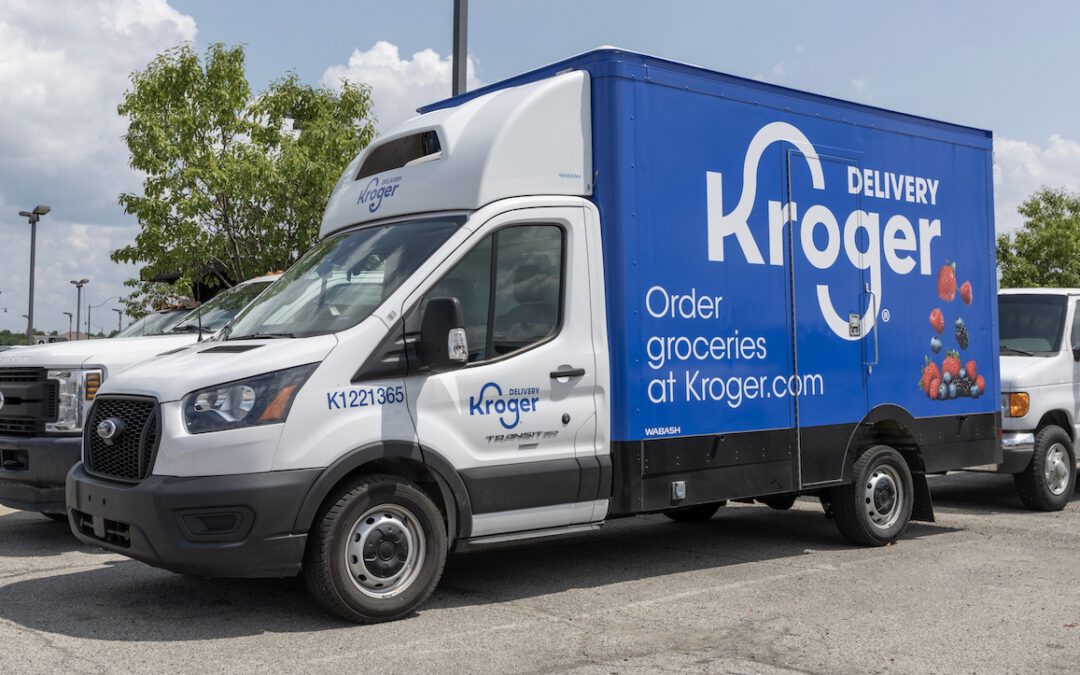As grocers look for ways to make the economics of eCommerce work in their favor, some key players are finding that in-house delivery fulfillment may not be worth the cost.
Most recently, multinational grocery giant Ahold Delhaize’s Giant Food brand is making the shift at one of its eCommerce facilities in central Pennsylvania, PennLive reported, continuing to pick and pack orders in-house at the fulfillment center but switching to third-party delivery.
“We’ve learned over the past few years that there isn’t a one-size-fits-all approach to our eCommerce business, particularly our fulfillment model,” Ashley Flower, a spokesperson for the grocer, told the news outlet, noting that the company regularly reviews its offerings in an effort to operate “as efficiently as possible.”
The report came days after CoStar News reported that grocery giant Kroger is shuttering three of its in-house delivery facilities — two in Texas and one in Florida — that operated in areas where it did not have consumer-facing stores.
“Kroger’s commitment to innovation means that we test and learn quickly to identify the most effective ways to deliver fresh, affordable food to our customers,” a company spokesperson said, per the report. “Despite our best efforts, including the support from new customers, learnings from other locations and the incredible work of our associates, these facilities did not meet the benchmarks we set for success.”
These shifts come as economic pressures have consumers spending more conservatively, prompting grocers to look more closely at their bottom lines. PYMNTS Intelligence found that 86% of consumers have made changes to their grocery shopping habits in response to rising prices. Fifty-eight percent have cut down on nonessential spending, 44% have switched to cheaper merchants, and 34% have reduced the quality of products they buy.
Running an in-house delivery service can be costly, requiring investment in labor, vehicles, maintenance and fuel. Additionally, grocers may prefer to focus on their core business of sourcing and selling groceries rather than managing a complex delivery operation. Outsourcing delivery allows them to allocate more resources to improving their product selection, customer service and store operations.
Meanwhile, third-party players are gaining ground. Instacart is tapping integrations with other companies’ technology to grow its reach. Players such as DoorDash and Uber Eats have been expanding their grocery offerings. Third-party fulfillment services often have the infrastructure and resources to scale delivery operations quickly in response to fluctuations in demand. This scalability can be challenging for individual grocers to achieve with an in-house delivery operation.
Consumers tend to prefer retailers’ online shops over third-party marketplaces when purchasing groceries online, according to the study “How Preferred Payment Availability Can Reduce Cart Abandonment.” The findings showed that 44% of consumers prefer retailers’ websites or apps when shopping for groceries digitally, while only 29% prefer online marketplaces.
Yet shopper satisfaction across these two channels is relatively equal, per the PYMNTS Intelligence report “The Online Features Driving Consumers to Shop With Brands, Retailers or Marketplaces.” The study, which drew from a survey of more than 3,500 U.S. consumers, revealed that 78% of consumers who had bought groceries from a retailer’s website or app in the previous month were very or extremely satisfied. Meanwhile, a slightly lower 77% said the same of online marketplaces.
For all PYMNTS retail coverage, subscribe to the daily Retail Newsletter.






